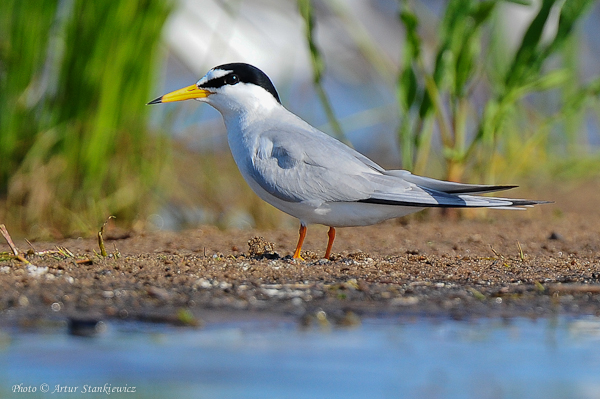British Little Terns at risk from climate change
One of the UK's rarest seabirds could become a victim of climate change as rising seas and increased coastal flooding squeeze the UK's coastline. Little Tern — the UK's smallest tern species — returns each April to breed on beaches at fewer than 60 locations around the UK. Traditional colonies at South Gare on the Tees and Donna Nook in Lincolnshire have already been lost due to changes in our coastline, and just one nesting site remains in Wales. Predictions of increased coastal flooding and sea level rise caused by climate change could spell disaster for these elegant seabirds, the warning coming in the wake of the Intergovernmental Panel on Climate Change (IPCC) issuing its Fifth Assessment Report.

Little Tern (Photo: Artur Stankiewicz)
Susan Rendell-Read, the RSPB's Little Tern project manager, said: "Little Terns are very vulnerable to the impacts of climate change. They need undisturbed sand and shingle beaches to nest with a plentiful supply of small fish just offshore. These beaches can be quickly altered by rising seas and floods, making them unsuitable for terns to nest. In the past, the areas lost to flooding or storms would be offset by new areas of sand or shingle thrown up by the sea. This is now being prevented by hard sea defences and other man-made developments. The result, known as coastal squeeze, means beaches are getting narrower and the terns are quickly running out of space. As rising sea levels and storms change our coastline, Little Terns are forced into fewer and fewer colonies and have to share space with people on some of our most popular beaches, leading to significant problems with disturbance."
A major new five-year partnership including the RSPB, Natural England and the National Trust has been established to help Little Terns adapt to climate change and secure their future in the UK. This partnership, supported by the EU LIFE + programme, will lay the foundations for the long-term recovery of the the species in the UK by protecting and creating nest sites and increasing public awareness and support. An important part of the recovery plan is ensuring that the few sites where Little Terns continue to breed are protected from disturbance. The RSPB and its partners are keen to raise awareness among local communities and beach-goers to give Little Terns space to breed safely and in peace.
Victoria Egan manages Little Tern colonies for the National Trust at Blakeney National Nature Reserve in Norfolk and explained: "Local communities and beach-goers have a vital role to play in helping the terns cope with the increasing threat of climate change. They need space to breed undisturbed so we are urging visitors to these beaches to follow any directions and advice given on local signs on the beach and avoid entering certain areas while they are breeding. These dainty little seabirds, no heavier than a tennis ball, have just started returning to our shores after travelling thousands of miles from their wintering sites off the south and west coasts of Africa. We need to make sure that they have the best chance of finding a suitable home when they arrive."

